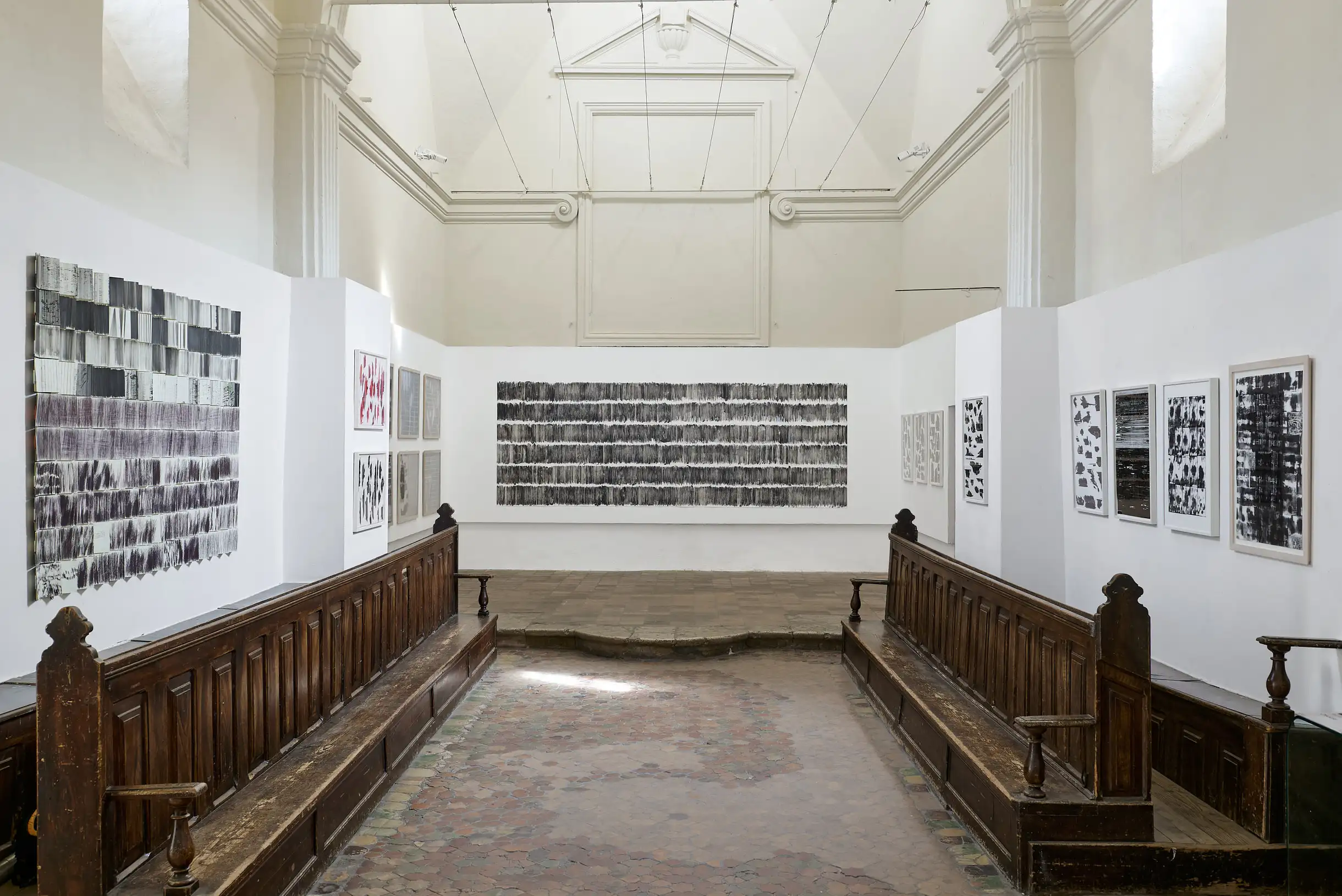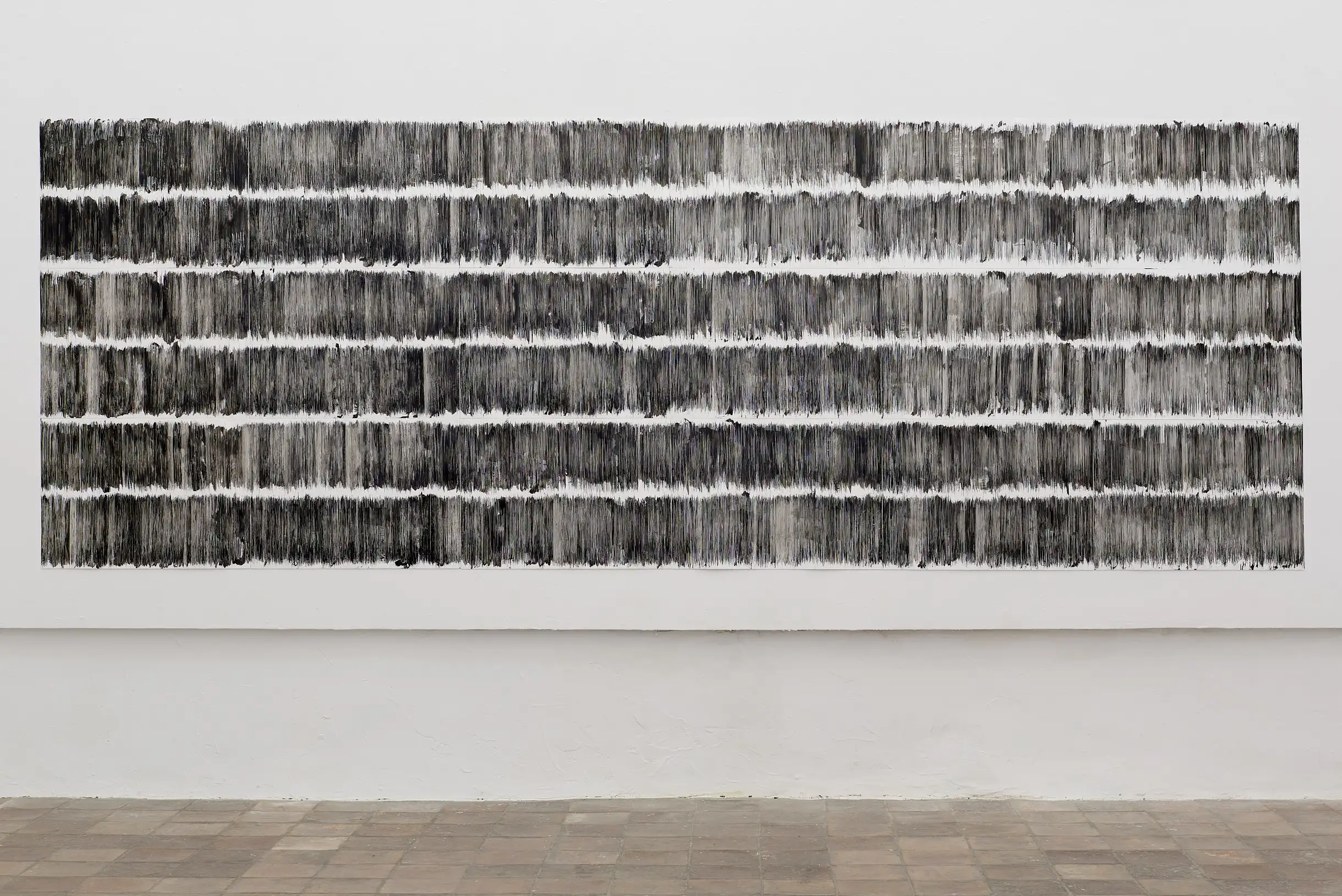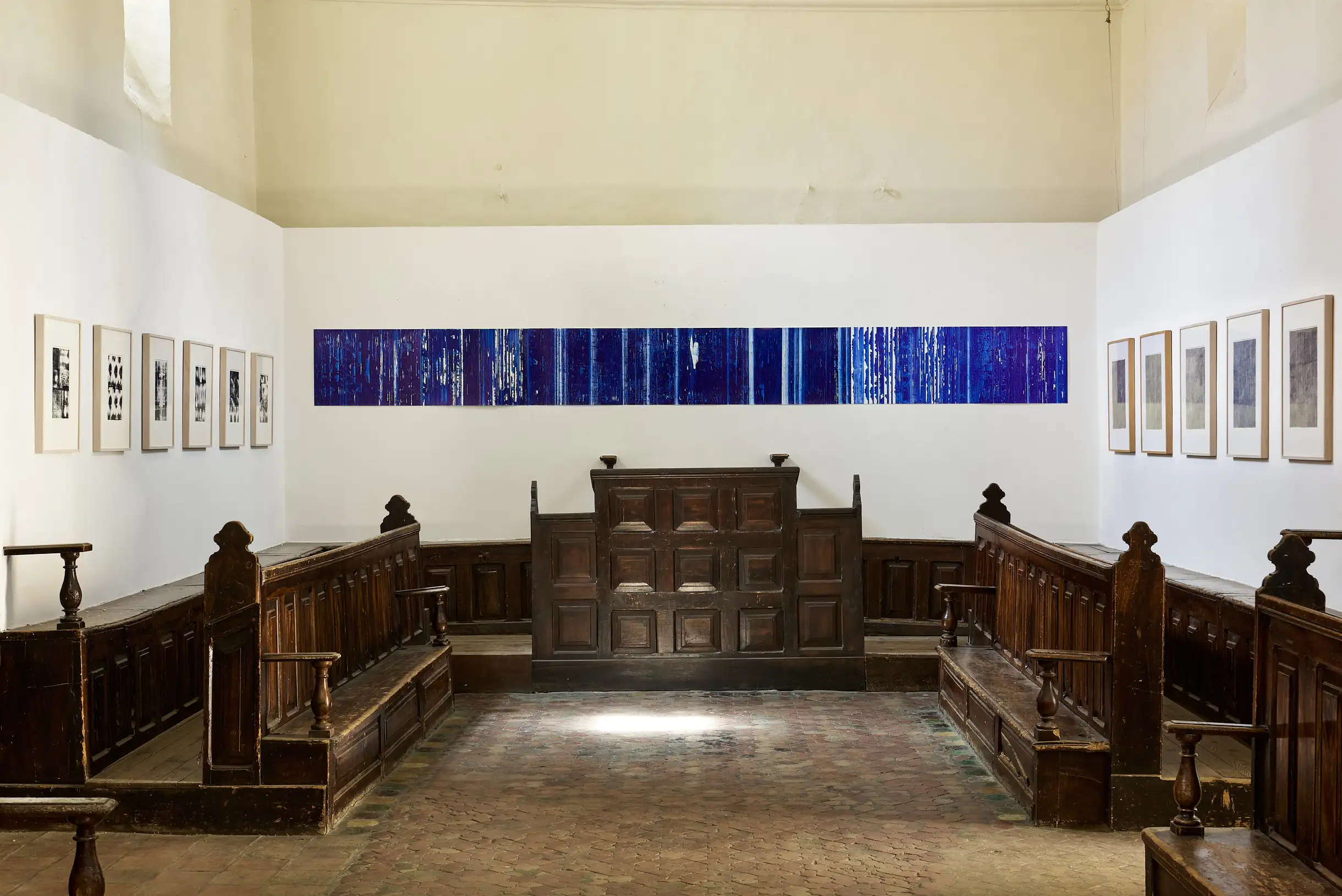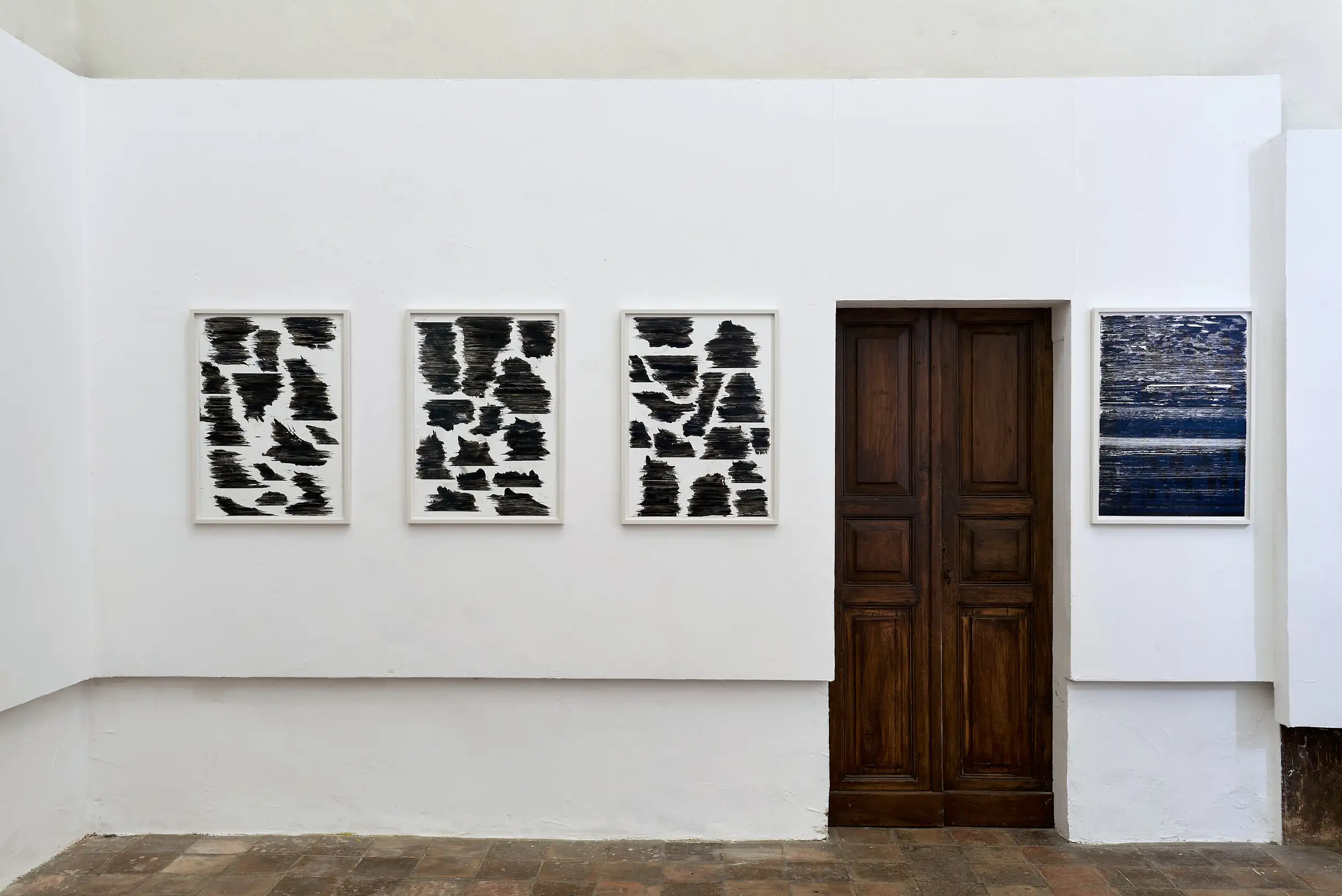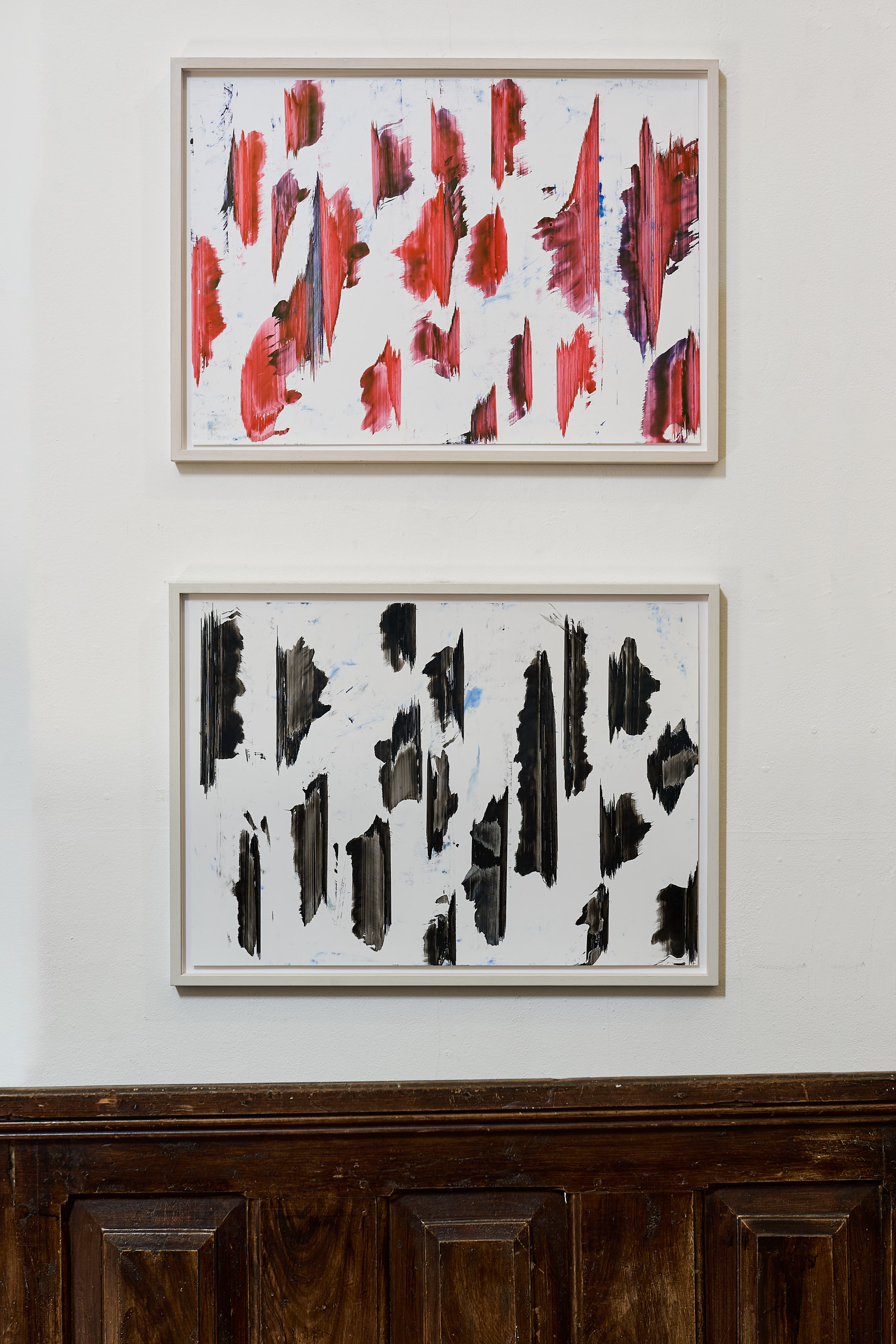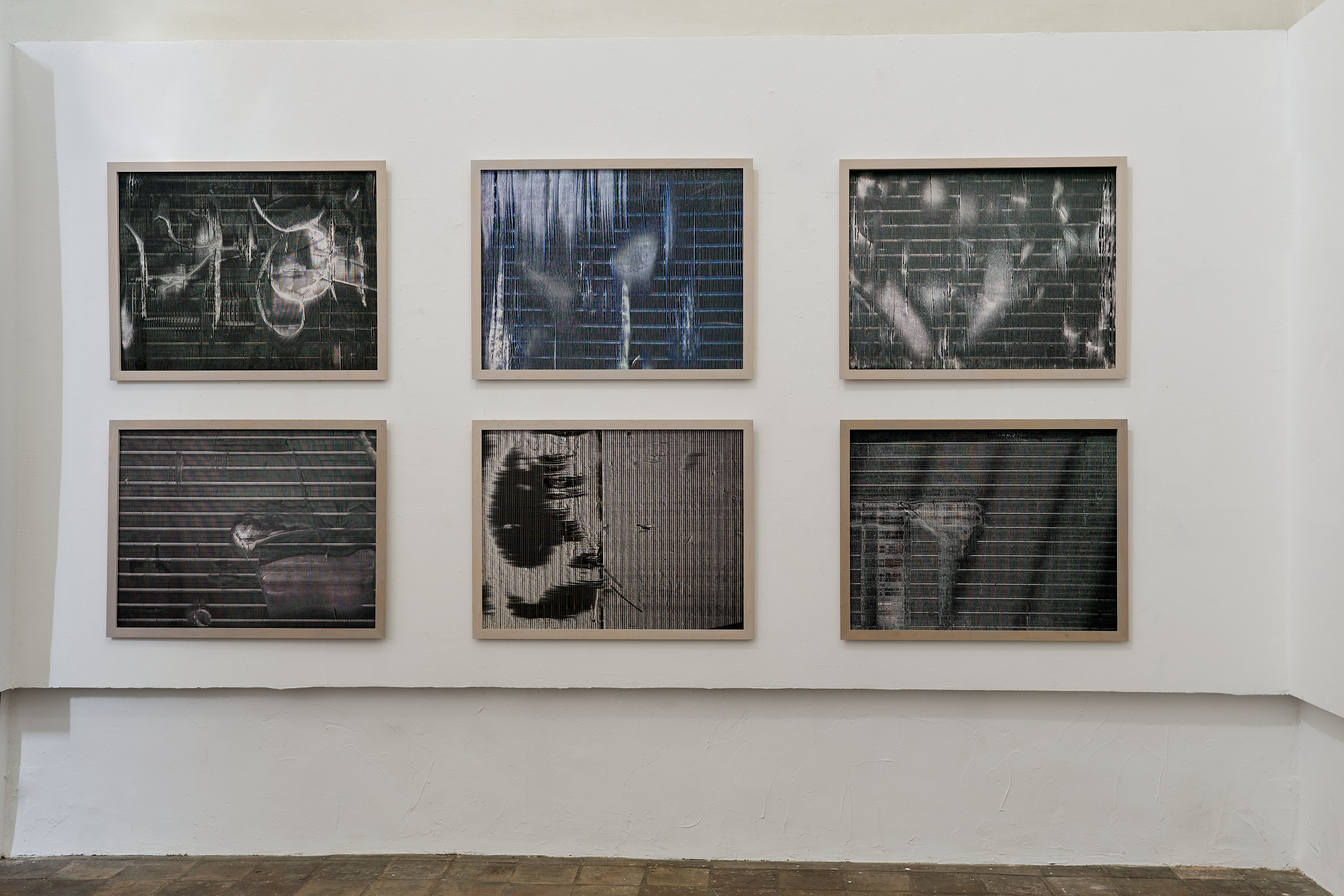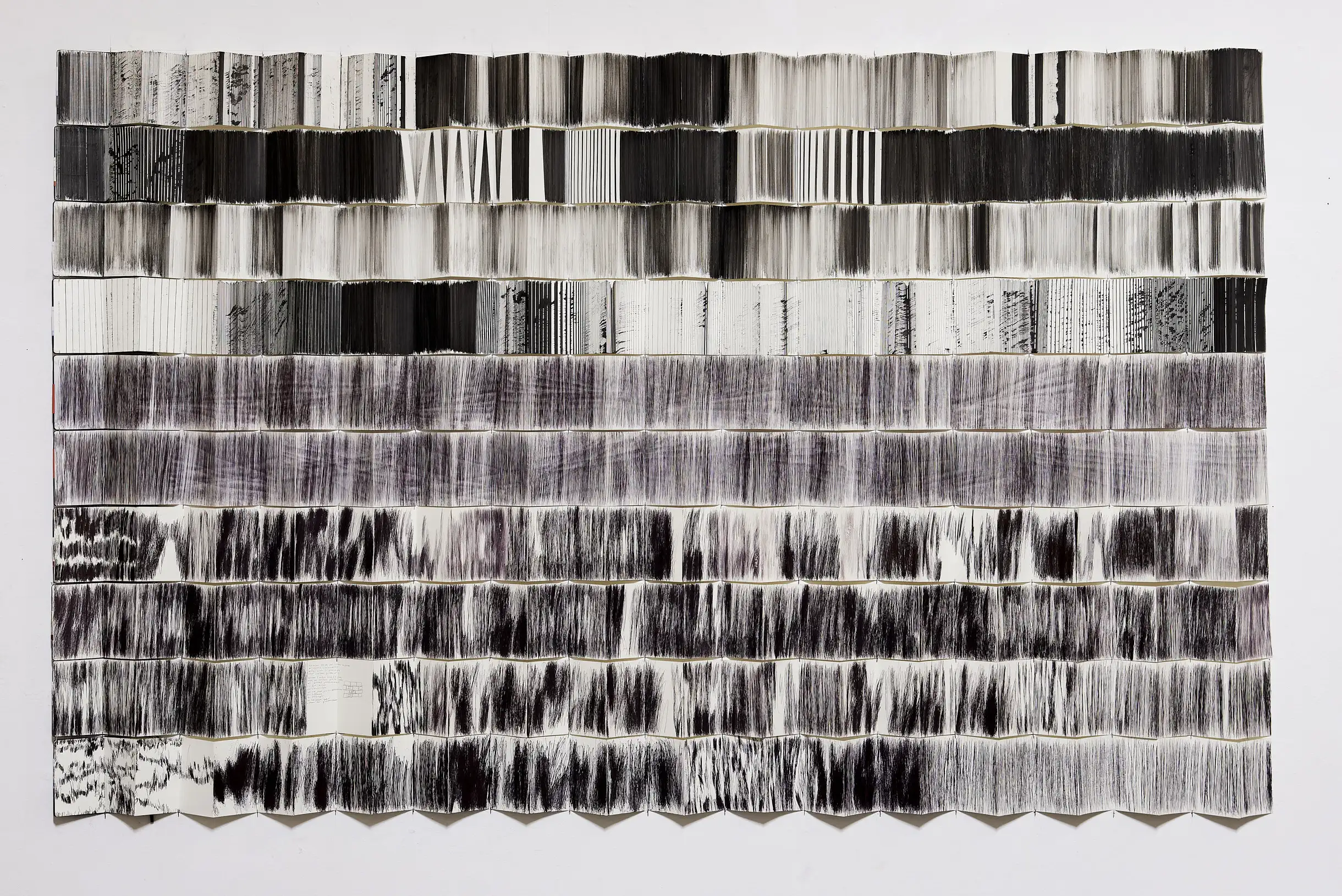Chapelle des Pénitents Blancs, Vence, France, Aug. 13-Sept. 3, 2024
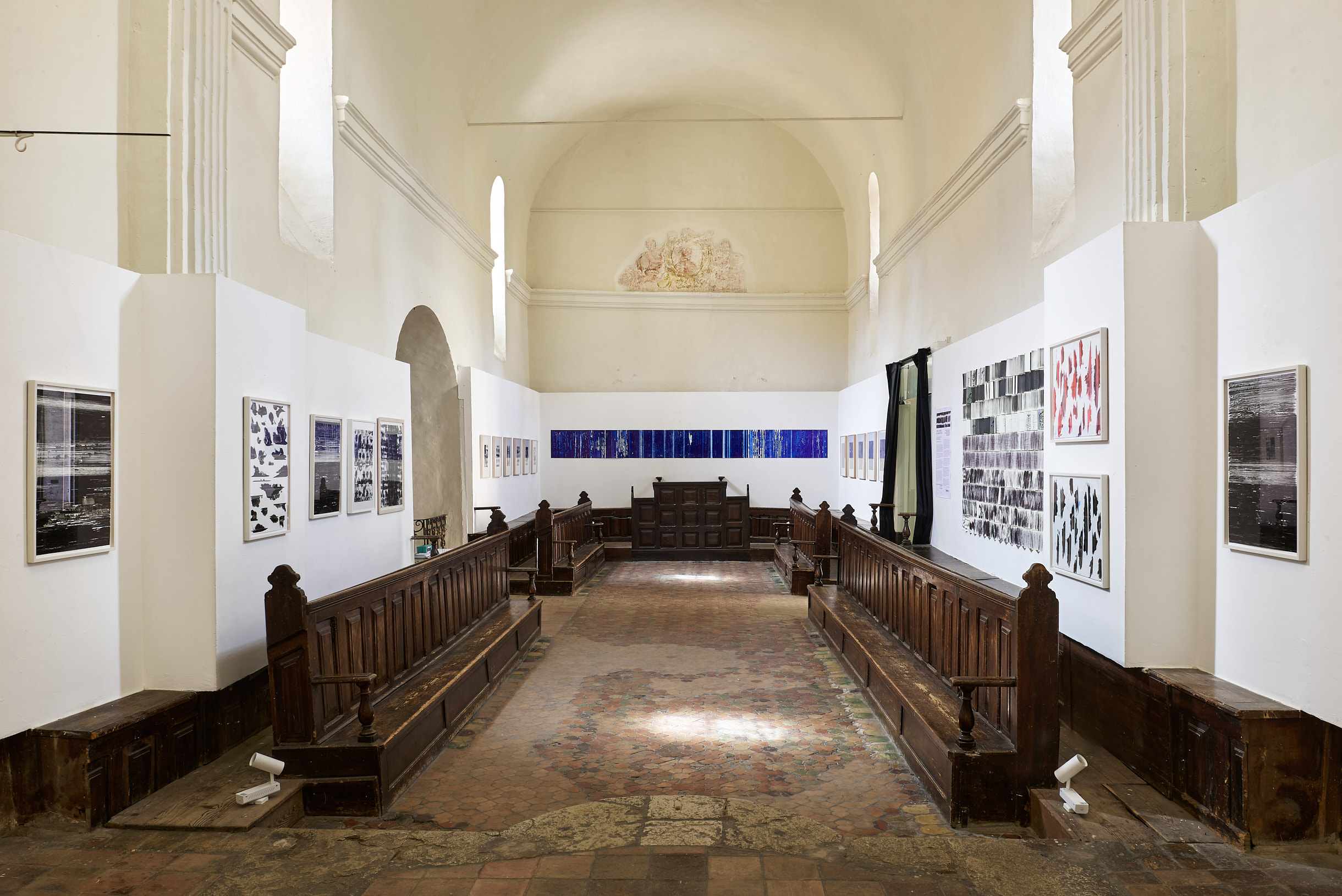
The exhibition “Infinite Paths” presented a selection of recent work completed over the past five years, since his move from New York to France. Included in this exhibition are ink on paper drawings of various sizes, pencil on paper, digital prints, and rubber stamp prints.
Initially nurtured by abstraction and later, minimalism, Tulcensky’s work evolved into a personal idiom that is both obsessive and repetitive. Whether in his earlier paintings, his drawings, his photography or his prints, seriality has driven his work from the beginning, opening the door to minute variations that build upon each other and in so doing alter the work from within. Like a counterpart to the bass, the drawing operates by underground, minimal transformations, in barely visible increments. It all seems very modest. The artist often says that he lets the strokes guide him towards paths he never foresees in advance, i.e. the infinite paths. The ‘accidents’ occur through ink stains, which infiltrate randomly, like impromptu reliefs within the rigor of the parallel lines.
While the drawings on Moleskine notebooks (The Notebook Project) or better still, those which preceded them on individual “Notecard drawings” used the same technique of obsessive drawing made with ballpoint pen or pencil, they retained the nervousness of the fast moving hand. One felt the vulnerability of a still hesitant line which escaped in all directions, like a web attempting to stretch to the very corners of the sheet. However, In its process, the drawing sometimes gets interrupted by the detail of trivial anecdotes, small sketches of the moment and personal mementos.
In contrast, the Infinite Paths series, presented here for the first time publicly, literally drags the line onto the glossy paper, with a more oozing pen, which flows without interruption. The drawing is launched in a frantic rhythm, it moves up and down fighting against time which passes too quickly, and only the stain encroaches on the order of the lines. Both filling time and space, racing against the clock, the dense black lines leave little room for breathing. Like an electrocardiogram, the line records the signals from the heart, from the soul. Dark and meditative, Harvey Tulcensky’s work is a confrontation with time. Neither indivisible nor indestructible, time is made visible. It is through this linear mass of steady lines and the continuity of the drawn expanse that the viewer becomes aware of its passage.
“In repetition I find solace,” says Harvey Tulcensky.
In the same vein, but this time as if the artist had decided to suspend the gesture to puncture the page with dark rhythms, the Cloud drawing series – in turn mountains, clouds, boats or bats – seem to barely cling to the page. Their frailly anchored fluid bodies, suspended by a few barely perceptible lines, dissolve at the edges. This body of work was inspired by listening to the electronic music of a fellow artist.
Finally, in his photographic prints, which he calls accidental drawings, excerpted from the series The AC Project, the randomness stems from the capture of a graffiti caught passing in the streets of New York, serendipity at play. The artist’s eye sees things that no one will have noticed, phantasmagorical shapes or those left to the imagination of the viewer – and, without a word, the metal grid turns into line. This is why he calls them accidental drawings.
Whatever the media explored, Tulcensky is in search of a fragile balance between the rigor of the meditative motion and the poetics of haphazard, between the formal framework of the line and the accidental stains that interfere. Unplanned occurrences, the unforeseen thus gives complete freedom to the artist’s gesture, as if he’d left the pen with the ultimate responsibility to draw his destiny.
